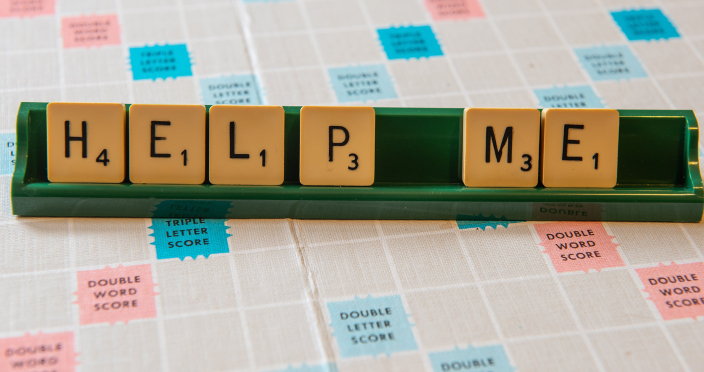So you are assigned another term paper, right? Have you made your way through the five classic stages – denial, anger, bargaining, depression and acceptance? Here are 75 quick tips that can help to invigorate your writing and help you to earn a decent grade without too much effort.
These time-tested tactics may be the only term paper help you need:
Create the right conditions
- Find a quiet place where nobody will disturb you.
- Give yourself enough time, so avoid starting too late in the evening.
- Bring a glass of clear water and make sure the room you’ll be working in has plenty of circulation.
Concentration is key
- Remove any and all distractions – block the most distracting sites (such apps as FocusBooster, Anti-Social and Concentrate can come in handy).
- Choose the right music – the best options are classical, jazz or some other genre that is unfamiliar to you.
- Have brain-boosting snacks (nuts, seeds, fruits) on hand.
Understand the task
- Be sure that you understand the main goal of the assignment; that is, determine at the outset whether you are being asked to discuss, argue, criticize or analyze.
- Look up any unfamiliar words in the description of the assignment.
- Contact your instructor if clarification is needed.

Collect all the essentials
- Find your notes or borrow them from trustworthy classmates.
- Have a laptop, pens, pencils and a notebook at the ready.
- Make yourself comfortable in your chair, but not too comfortable (don’t try to work in bed).
Do the research
- Start with basic Google searches (scholar.google.com, books.google.com are very useful here).
- You can use a free essay database for your research, too.
- Consider using crowd-sourcing platforms (SurveyMonkey, HelpaReporter or simply your social media contacts list can help a lot).
Speed reading skills can help with term paper writing
- Use Ctrl+F to search documents instead of reading them in full.
- Concentrate on abstracts, intros and conclusions.
- If you have to read an article in full, consider special speed-reading apps, such as Boba, Acceleread and ReadQuick.
Begin citing sources at the outset
- Make it a rule to cite sources as you research.
- Know the rules of the recommended writing style (APA, MLA etc.).
- Always save the links or full text documents to avoid losing them accidentally.
Avoid plagiarism
- Use quotation marks for direct quotes.
- Give credit to the authors you cite.
- Always provide sources when you cite important data, such as stats and figures.
Make effective notes
- Write down any important ideas you find.
- Write down ideas as they cross your mind.
- Draw mind maps that connect ideas with arrows instead of writing out full sentences.
Brainstorm
- Set a timer and prepare to generate as many ideas as you can in a short period of time.
- Start a timer and write down every idea that crosses your mind.
- Select the best ideas.
Outline
- Use classic structure (Introduction + literature review + methodology + results + discussion + limitations + conclusion).
- Write one full sentence for every section.
- Decide how many words you should write for each section.
Stay productive
- If you feel tired, do some exercise to keep your blood running and feel refreshed.
- Take small pauses regularly. For instance, 50 minutes working and 10 minutes rest is a proven success formula.
- If you feel reluctant to write, try the idling method. Sit and do absolutely nothing for ten or fifteen minutes.

Write an introduction
- Include an attention hook – some striking statistic, an interesting quote or a rhetorical question.
- State your main goals.
- Formulate your hypothesis or research questions.
Polish a thesis statement
- Include a thesis statement at the end of the introduction section – a brief summary of your entire paper.
- Make sure that your thesis statement makes sense, and answers the question, ‘so what?’
- Include some controversy in your thesis statement to show that you are able to view the various sides of the issue.
Write a literature review
- Divide sources into groups according to the point of view chosen by the authors.
- Look for aspects of your topic that other authors have not addressed.
- Make a realistic promise to fill that gap.
Choose methodology
- Decide between quantitative or qualitative research and whether you will give more attention to primary or secondary sources.
- Decide whether representative or convenience sampling is more suitable to your topic.
- Consider how many sources you need in order to reach reasonable conclusions.
Describe your findings
- Provide a detailed description of your findings.
- Provide only figures.
- Avoid expressing your opinion at this point.
Discuss your findings
- Draw conclusions from your findings.
- Discuss the main trends.
- Describe any relationships among different aspects of your work.
Mention possible limitations
- Discuss possible sources of bias in researchers or participants.
- If you used convenience sampling, be sure to mention it as one of these limitations.
- Discuss aspects that might be improved in your term paper.
Write a conclusion
- Start with a brief summary of your research process and findings.
- Avoid including any new information.
- Offer suggestions for further research.

Take a deserved rest.
By this point, you’ll forget you wanted term paper help in the beginning.
- Before proofreading, be sure to take a break.
- Call a friend.
- Watch some funny videos.
Use spell and grammar checkers
- Check your grammar with Grammarly, Ginger or WhiteSmoke.
- Check your style with Expresso or WordRate.
- Check your punctuation with Spellcheckplus.com or Onlinecorrection.com.
Proofread
- Check every suggestion from proofreading tools.
- Proofread the whole thing once again without using any of these tools.
- To have a fresh eye, try reading the sections in reverse order, or print your draft out rather than reading it from the screen.
Polish format
- Double check font, margins and spacing.
- Check the citations and bibliography page.
- Make sure that every section is in the right place: title page, outline, bibliography and appendices.
Submit your paper
- Submit your paper.
- Forget about it for a while.
- Relax. Smile.




![26 Best Free Online Citation Generators [New 2024 Tools]](https://ivypanda.com/blog/wp-content/uploads/2016/02/hands-working-with-a-laptop-title-online-study-on-screen-309x208.jpg)

![Free Essay Help Online: 31 Reliable Websites [2024 Update]](https://ivypanda.com/blog/wp-content/uploads/2016/02/photo-cheerful-black-woman-holds-cellular-types-text-messages-uses-earphones-listens-music-dressed-ragged-overalls-models-outdoor-enjoys-playlist-modern-technologies-online-communication-309x208.jpg)

Dear ivypanda.com webmaster, Keep up the good work, admin!
Thanks for the feedback, John!
I do not even know how I ended up here, but I assumed this submit was good. I don’t know who you are, however, you’re going to be a well-known blogger for those who are not already.
Thank you, Michaela! Such kind words, I appreciate that and hope you visit our blog again!